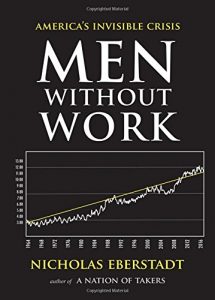Do you know someone who has been in prison or have you ever been in prison? It’s not that rare anymore in this country to answer yes.
Though the U.S. recidivism rate is as high as 50-75 percent within five years, suggesting many of the same people end up in prison more than once, about 650,000 men and women are released from prison every year. They are returned to the communities from where they came with slightly less than what they had when they first went in, except now, they’re stigmatized, have less chance of getting a job, and few skills to keep up with changing educational requirements and work environments.
It’s enough to leave these people with a feeling they’re never going to get back on their feet or achieve more than the little they started with.
But to become prepared for a new day and reduce that chance of going back in, prisoners need to learn skills while locked up, and isn’t that what prison is supposed to do? Rehabilitate, not just punish and incarcerate?
And less face it, if prisoners don’t get the skills needed to begin the climb up the economic ladder, communities with large ex-prisoner populations are going to remain less safe and families in them will be less stable. The cycle that resulted in these people going into prison will repeat itself.
So what to do? Education is key. Getting lessons in new skills will make prisoners more employable upon release.
Writing for CNN, Gerard Robinson and Van Jones suggest ways to extend opportunities for people who are returning to communities that most need workers who can earn a decent income and be productive members of society.
First, we need to lift the ban on access to Pell Grants for incarcerated individuals. This approach provides motivated individuals an opportunity to turn their lives around. When the Pell Grant program began, all qualifying students including the incarcerated were eligible to receive small amounts of federal funding to help pay for college tuition.
Beginning with the enactment of the 1994 crime bill, incarcerated individuals were excluded from receiving federal funds. As a result, nearly 350 in-prison college programs across the country disintegrated.
In 2015, the Second Chance Pell pilot program was announced, which has already helped 12,000 incarcerated individuals receive grants to access higher education in state and federal facilities across the country. We should expand this pilot program, or make it permanent.
Second, we should expand access to all federal student loan programs for incarcerated juveniles and adults. Some believe this approach makes fiscal sense and will help make our streets safer and economy more prosperous. For example, a study from the RAND Corp. showed that a $1 investment in education yields $4 to $5 in public safety cost-savings. It also found that individuals who received education while behind bars were 43% less likely to end up back in prison and 13% more likely to obtain employment following their release.
Third, we must ensure that individuals convicted of drug-related crimes are not barred from financial aid or federal student loans if they choose to pursue a college degree. It is counterproductive to lock individuals out of opportunity for higher learning after they have paid their debt to society, especially when there has been a growing, bipartisan movement to ensure that individuals convicted of drug crimes receive access to treatment and rehabilitation, moving them toward a path to success. It is past time.
The Institute for Higher Education Policy is pushing these ideas in a new campaign called #CollegeNotPrison, and #cut50, the national bipartisan criminal justice reform organization founded by Jones, is trying to introduce these programs where they are most needed.
Helping the 95 percent of prisoners who return to the neighborhoods they started in not only gives purpose to the lives of those who went down the wrong path, but ultimately aids the communities to which they return.






